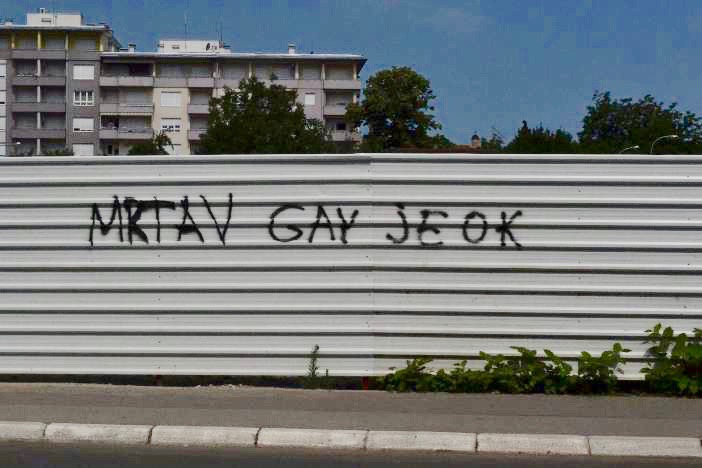
Graffiti is a type of written or painted message, usually in response to the state of society. It encourages people to further their creativity and originality through creating pieces that few can ignore, regardless of whether the graffiti is positive or negative in nature.
Ivan Šijaković, professor of sociology at the Faculty of Political Sciences in Banja Luka, considers graffiti an expression of rebellion, the product of a captive consciousness.
“People of a weaker mindset, those who experience a certain form of entrapment or cannot accept and understand others because they haven’t yet discovered themselves, are usually the authors of the graffiti. Such people tend to write offensive graffiti that is directed at someone, or some ethnic or religious group. They reveal their identity as a way to protest against someone else’s,” stresses Šijaković.
We have witnessed how negative graffiti that calls for discrimination outweighs the positive instances—the ones that humorously represent the state of our society.
“Graffiti can have a positive, humorous message, but also often presents certain attitudes, therefore, every tension in society – ethnic, religious, or national, has been used as grounds to create graffiti against others. Graffiti can incite hatred because its messages are public statements. They alone cannot produce hate speech, but they are an expression of it. The person creating the messages already feels that hatred, which they later write in a public place,” stresses Šijaković.

Šijaković feels that such actions should be controlled and reduced. The instigators of these actions are most often people who don’t have the courage to openly and loudly proclaim their opinions and attitudes about a certain situation to the public, but instead do it in a perfidious way. According to Šijaković, the message that will be presented to the general public is of a primitive, trapped, or limited mindset. It is such people, he adds, who give a bad name to the ones who create graffiti in the name of art.
One professional tattoo artist who paints graffiti in his spare time emphasizes that he strives to send positive messages to the people who look at his work. He feels that there is a need for more murals in order to decrease the number of threatening messages of a nationalistic nature. He is aware that such content cannot be prevented as the perpetrators usually create it during times when no one is on the streets. He stresses that there is a big difference between graffiti, murals, and simply scribbling offensive content in plain letters on walls. The latter is vandalism.

When we asked young people about graffiti, they said that even though there are positive examples that adorn buildings, the majority of instances are negative and desecrate beauty. According to them, this is an expression of frustration among younger generations and, above all, a result of a lack of proper upbringing and manners.
When asked whether graffiti can lead to hatred and, subsequently, discrimination, one student at the Faculty of Political Science in Banja Luka stated that various forms of vandalism, most commonly graffiti, do lead to discrimination.
“Usually the perpetrators are fans of different sports clubs or members of different political parties and different nationalities. They use graffiti to spread their messages of hate and to poison the rest of the population,” she explains.
The fact is that graffiti has become a sort of collective expression of viewpoints. It is possible that an entire group has a certain attitude, but the person writing is the presenter, seeking out people who think like them. Graffiti plays a duel role. First, it allows a person to express their position while remaining hidden from the public eye. Second, it can provoke thought and a visible reaction from its viewers.






